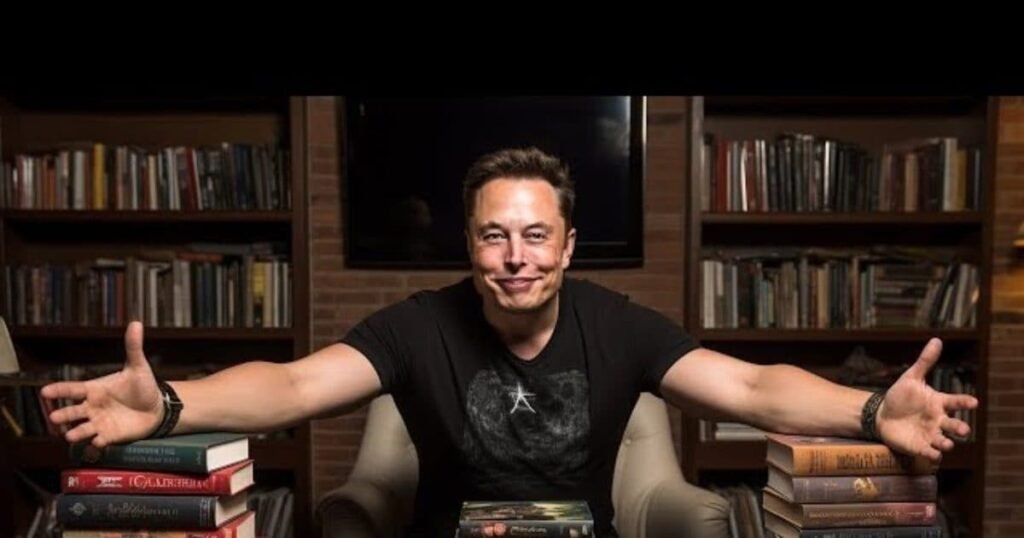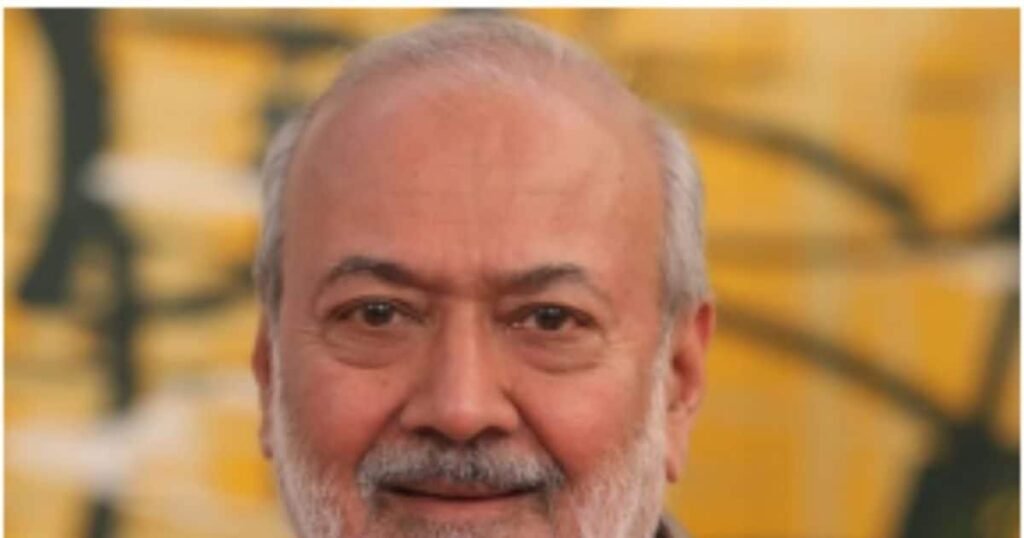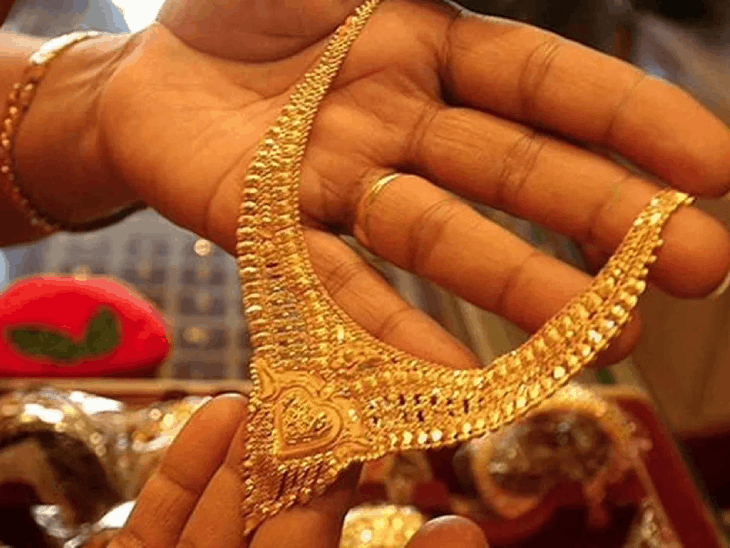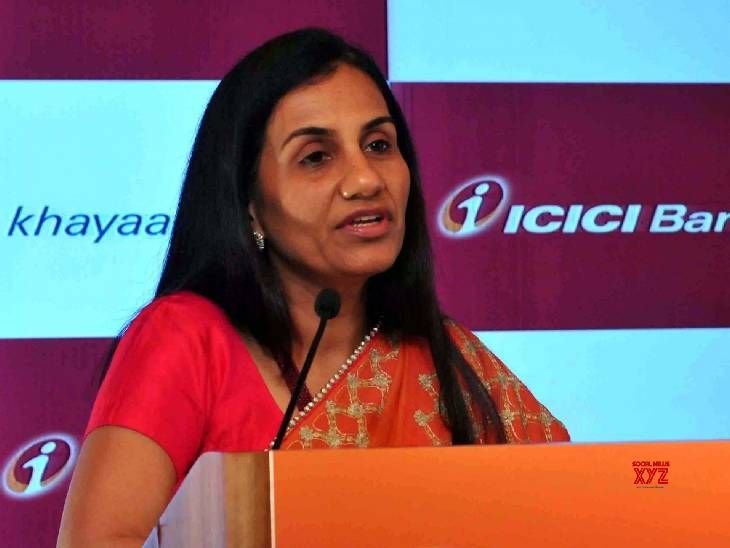Village lacked resources- yet Chatru’s daughter won gold in America

Village lacked resources- yet Chatru’s daughter won gold in America Success Story: Chatru Chaudhary of Lapla village in Balotra district of Rajasthan created history by winning the gold medal at the World Police and Fire Games 2025 held in the US. Despite limited resources, social taunts and economic difficulties, Chatru illuminated the name of the village, family and Rajasthan Police with his struggle. The farmer father took a loan and prepared him, and Chatru won gold in 11 and 21 km relay race and bronze medals in 400 and 800 meters. On returning to the village, Chatru received a grand reception, where everyone was seen proud of his achievement. Source link
Once the poorest, he gained billions, then lost everything

Once the poorest, he gained billions, then lost everything New Delhi. We think about the richest people in the world, so our minds come to our minds like Alan Musk, Mukesh Ambani, Gautam Adani and Jeff Bezos. But have you ever thought who is the poorest person in the world? Usually, on hearing the word ‘beggar’, huts, empty steel bowls and torn clothes come to our mind. At first glance, Jerome may look like an ordinary man walking on the streets of curvial Paris. But his story is not simple! Poverty does not appear at her clothes, food or home, but Jerome Curvial has such a big financial burden that she shook the global market. And eventually, he received the title of “world’s poorest man”. Who is Jerome Curviel? In this article, we are talking about Jerome Curviel, who is a French person and is now considered to be the poorest and most debt -ridden person in the world. They have a debt of about ₹ 4.95 lakh crore (about $ 6.7 billion). Being poor does not always mean empty pocket. Jerome was born on 11 January 1977 in Pont-L’Aabi, a small city in France. Jerome was from an ordinary family. Talking about his personal life, his mother was a hairdresser and his father was a blacksmith. Jerome was a good student. He completed a master’s degree in finance from Lumier University Lyon 2. Soon after completing his studies, he got a job in France’s third largest bank, Society General. In the bank, he worked as a junior derivatives trader. However, his technical information and excellent trading capacity helped him cover millions of deals. He was always part of the bank’s delta one division, which is related to share trading, algorithms and investment. How to become a trader of Jerome Curvial billions of dollars? Jerome had widespread knowledge of computer programming and trading systems; However, he misused this knowledge and expertise. Jerome was abusing the weakens in the bank’s internal systems and arbitrators. During this time, he traded billions of dollars using the company’s capital. Initially, he earned great profits, carried out trades of about $ 73 billion in a calendar year. What was the scam of Jerome Curvial? How did the world know? It was observed that the bank was aware of this practice for a very long time, as Jerome used technology to hide every irregularity. However, in 2008 this fraud became clear and investigation began. The scam came to light on 19 January 2008, which surprised the bank and all the people around it. During the investigation, it was found that the bank suffered a loss of about $ 7.2 billion (about ₹ 4,95,000 crore) due to unauthorized trading by Geom, as stated in media reports. This amount became a debt burden against him, which made him one of the poorest people in the world. What order did the court order against him? According to a report by The Guardian in 2010, 33 -year -old Jerome Curvial was found guilty of betrayal, misuse and forgery. He was sentenced to five years in jail, out of which a sentence of two years was suspended. In a dramatic moment in the courtroom, the judge also ordered him to pay a compensation of € 4.9 billion (about £ 4.2 billion) to the Society General – it was the same amount that the bank lost in January 2008 due to his high -risk trading strategies.After the incident, Jerome was sentenced to three years in jail in 2015. He admitted several allegations including betrayal, fraud and unauthorized access to computer systems. Jerome was released under electronic surveillance after serving a sentence of only five months in 2014. Where are Jerome Curviel now? His sentence has been completed, but the burden of debt remains even today. After being released from jail, Jeromes are trying to live a simple life, but the burden of debt still makes him one of the poorest people in the world. Source link
Uorfi Javed’s net worth, career start, and fame revealed

Uorfi Javed’s net worth, career start, and fame revealed Uorfi Javed’s Net Wort: Urfi Javed has made his name in the world of social media and Indian television. Urfi, known for her bold fashion choices and impeccable personality, is always in the headlines due to her unique style and disrespect. From television screen to viral Instagram video, the journey of Urfi is really amazing. Let us know about Javed’s net worth, career, education. Recently in an Instagram video, Urfi (Urfi) Javed shared an honest moment with his fans, in which he revealed the painful process of removing his lip fillers. He said, “No, this is not a filter. I decided to remove my fillers because they were installed very wrongly.” In the video, a doctor is shown injections in his lips, which swollen his face and he felt discomfort. Urfi admitted that she was not against the fillers, but she was not satisfied with the previous results. She is planning to get Phillars done again in Future, but in a more natural way. He warned his followers to consult only experienced professionals. He said, “Many doctors who have great clinics do not really know much. Finally, I found @Dr.Rickson – believe, they are the best.” Although this level of transparency about cosmetic processes in the entertainment world is rare, but Urfi Javed is always known to speak her mind. Urfi Javed’s education: Urfi Javed was born and raised in Lucknow, Uttar Pradesh. She comes from a traditional Muslim family. He completed his schooling from City Montessori School, Lucknow and later earned a degree in Mass Communication from Amity University, Lucknow. Although he was raised in a conservative environment, but the dreams of Urfi were far ahead of their city. His desire to step into the entertainment industry brought him to Mumbai, where he started making his place in the world of acting and modeling. From conflict to stardom, Urfi Javed’s career journey: Urfi Javed started his career with small modeling assignments and small TV roles. Despite no connection in the film industry, he did not give up. He got a big break when he was cast as Avni Pant in the TV serial ‘Bade Bhaiya Ki Dulhania’. After this, he worked in many popular Indian TV serials, such as Yeh Rishta Kya Kehlata Hai, Panch Beat, Kasauti Zindagi Ki, Hey Mere Humsafar, Bigg Boss 15 (Guest Appearance), The Treater India (Joint Winner). When the famous was: His fame touched the sky when he participated in Bigg Boss OTT season 1, where his unique fashion sense and fearless attitude gave him recognition from house to house. Urfi Javed’s Net Worth: According to Times Now, Urfi Javed’s net worth is about ₹ 173 crore. Her income comes from acting, fashion modeling, social media effects and brand endorsments. He has more than 5.3 million followers on Instagram, where Urfi shares sponsored content, brand collaboration and fashion videos regularly, which helps to increase their earnings. He has established himself as one of India’s highest -grossing influencers. Urfi Javed is not just a trendsetter-he is a self-maid star who has made his career with perseverance and originality. In Lucknow, from his education to Mumbai entertainment and fashion scenes, his journey is his journey. Whether it is to adopt cosmetic processes or set fashion trends, Urfi continues to make headlines and keeps her brand increased. homeBusinessUrfi Javed Net Worth: Some of the rich fashion influencers living in disputes Source link
No punishment, no complaint-only duty: Navy Chief’s story

No punishment, no complaint-only duty: Navy Chief’s story Admiral Dinesh Tripathi became the 26th head of the Indian Navy. Tripathi, who was a student of Sainik School in Rewa, worked in many important positions in 40 years of service. He is also a classmate and friend of Army Chief Upendra Dwivedi. This is the first time that two to four-star military heads have been made from the same school. Admiral Dinesh Tripathi was appointed on 1 July 1985 to the Executive Branch of the Navy. He has commanded the INS destruction, Kirch and Trishul. Apart from this, he served as the Flag Officer Commanding-in-Chief and Vice Admiral of Western Naval Command. Vice Admiral DK Tripathi is at the charge of 26th Navy after retiring from R Hari Kumar’s service. He was born on 15 May 1964 and joined the Indian Navy on 1 July 1985. Tripathi has done several important assignments over a period of 40 years. Communication and Electronic War Expert Admiral Dinesh Kumar Tripathi is the 26th Navy chief. Born in Mahudar village in Rampur Baghelan in Satna district, Admiral Dinesh Tripathi is an alumnus of Sainik School-Rewa of Madhya Pradesh and National Defense Academy, Khadkwasla. Admiral Tripathi is the classmate of Lieutenant General Upendra Dwivedi. In fact, he studied on the same bench in Sainik School-Rewa and was good friends. The Navy chief visited his village and Alma Mater about a week ago. Admiral Tripathi’s school records show that he was going to follow the rules. There was no punishment letter in his name and he always performed well in the examinations. Before taking charge of the Navy Chief, Admiral Tripathi took blessings from his mother Rajni Tripathi, which was also a matter of much discussion and that photo was also viral on social media. He also served as the Commandant of the prestigious Indian Navy Academy, Ezhimala. He has also got the Ati specific service medal (AVSM) and the Navy Army Medal (NM). Sainik School, Rewa has given more than 700 officers to the Indian Army, including at least 21 general rank officers in all three services. He has also worked on various important operations and staff appointments. This includes the Operations Officer of Western Command, Director of Operations, Principal Director-Network Focused Operations and Principal Director, Navy Yojana. As a rear admiral, he served as the Flag Officer Commanding of Eastern fleet. Rewa Sainik School has prepared more than 700 military officers, of which at least 25 are of general rank, two of which are now four star service. Dr. RS Pandey, Senior Master of Sainik School Rewa, says that for us, it is a matter of great pride for our Sainik School Rewa and our state. This is the first time that two wing of the armed forces are the main classmates and school companions and are from the Vindhya region. Both Navy Chief Dinesh Kumar Tripathi and Army Chief Upendra Dwivedi are both studying from the same school. Friendship between the two has also been confirmed from school days. General Dwivedi and Admiral Dinesh Kumar Tripathi were students at Sainik School Rewa in Madhya Pradesh from 1973 to 1981. Dinesh Tripathi is very simple in nature. They are very serious about their responsibilities. homemadhya-pradeshNeither punishment, nor complaint – only duty! Know the story of Navy Chief Dinesh Tripathi Source link
Two UP brothers turned ₹25K into ₹300Cr business idea

Two UP brothers turned ₹25K into ₹300Cr business idea Two brothers from a small town in Uttar Pradesh have set up a large business empire. Success Story: Sanjeev and Rajiv Gupta grew up in Gulavathi, where their father used to run a small grocery store. Seeing his father struggling, the two brothers dreamed of doing something big. He moved to Ghaziabad, where he initially borrowed air coolers on borrowed from wholesalers and sold them by making some profits. In the early days, they used to go door-to-door on a scooter to meet dealers in Faridabad. As the trade increased, he bought a better scooter. Conflict of two brothers: In 1992, he started making his own coolers by borrowing Rs 25,000 from friends and launched the ‘Samarkool’ brand. He launched the first cooler for Rs 1600. Sanjay and Rajiv faced many challenges, especially in winning the trust of customers. Large showroom owners hesitated to see Samarkool products. However, his cooler was different due to his affordable price, quality and mouth -spoken propaganda. Gradually, people began to believe their products and the business increased rapidly. In the first 10 years, his company increased at a rate of 50 times per year, showing their product quality and customer service. ‘Samarkool’ Business Model: In 2005, a fire caused a big loss due to a fire in one of his units. But his good credibility in the market saved him. Dealers and suppliers came forward to help. The distributors paid them in advance and lending by suppliers of raw materials. With this belief and support, he re -erected the business and now make more than 1 lakh products per month. Their business model is simple: 80% of the products (except LED TV and washing machine) are made in-houses and 90% sales are from offline retail stores. Over the years, Sanjay and Rajiv have increased the range of their products by moving beyond the air cooler. Today, their products include sealing fans, exhaust fans, room heaters, LED TVs, kitchen appliances and other fast-moving consumer electronics. His company, which is located in Ghaziabad, has four modern factories and about 200 people work. They work in 17 states with 250 distributors and their products are available in about 4,000 stores across the country. Online marketplaces like Amazon and Flipkart now contribute 10% to their business. homeBusinessThis business started in Rs 25000 by borrowing, today a company made of Rs 3000000000 Source link
Billionaires read these 10 books — you should too.

Billionaires read these 10 books — you should too. If you want to become rich, then you must read these books. From Alan Musak to Warren Buffett, the billionaires of the world are admired. Because they get to learn the skills of becoming rich from them. Let us know which are the 10 names, who read billionaires. 1. Morgan Jauel’s book “The Psychology of Money”: Money is not just a matter of mathematics, it is also of behavior. This is the main message of this Bestseller’s book, which is also liked by billionaires like Warren Buffett. Housellers explains why people take irrational financial decisions and how can they be avoided. This book teaches patience, long -term thinking and power of compound. There are real -life stories in this book, which maintain your discipline in the title. If you want to understand money deeply, then you should start with it. 2. Ray Dalo’s “Principals”: In this book, Ray Dalo (founder of Bridgewater Associates) has shared the principles of his life that made him a billionaire. This book is filled with direct advice on decision making, risking risk and adopting failure. The principle of “Radical Transparency” of Dalio is a game-changer for leaders. Many billionaires consider this book to be helpful in making their strong teams. This is not just theory, a practical blueprint for success. 3. James Clear’s book “Atomic Habits”: Small habits give big results and billionaires are best aware of this. Clear’s book explains how small changes can turn into extraordinary success. Both Alan Musk and Jeff Bezos have emphasized the importance of daily routine. In this book, the science of habit stacking, environment design and consistance is told. If you are trapped in a routine, then this book can inspire you to move forward. 4. Daniel Kahneman’s “Thinking, Fast and Slow”: Nobel Prize winner Kahneman explains in this book how our brain takes decisions and often these decisions are irrational. Billionaires like this book because it highlights the hidden prejudices that obstruct success. From extreme confidence to avoid loss, it is a masterclass in critical thinking. If you want to beat your mind, then it is necessary to read this book. 5. Eric Reece’s “The Lean Startup”: Silicon Valley veterans swear by this book. Reece teaches how to make a business with the least waste and maximum agility. “Build-Major-Lern” is a mantra for loop startup installations. Billions prefer to focus on its rapid use and pivitting. Even if you are not an entrepreneur, its lessons apply to any ambitious work. 6. Youval Noa Harari’s “Sapiens”: This book is based on the history of humanity and is a favorite of deep thinkers like Bill Gates. Harari has told how humans developed and shaped the modern world. This book forces you to question everything – money, religion, even happiness. For billionaires, this quarterly reminds of thinking beyond earnings. 7. Tim Ferris’s “The 4-Hour WorkWeek”: This book of Ferris is a Bible to get rid of 9 to 5 jobs. Billions appreciate its efficiency and focus on automation. It does not mean less work, but to work wisely. From outsourcing to lifestyle design, it has many unique strategies. This answer states that the change in mindset is invaluable. 8. Peter Thail’s “Zero to One”: Paypal co-founder Peter Thail believes that true innovation means to go from zero to one, not to copy the things already existing. Billionaires prefer opposite ideas on their competition and monopoly. This book is small but is full of knowledge for innovation. If you want to build the future, then start from here. 9. Marcus Oralius’ book “Meditations”: The individual journal of Rome is an invaluable guide to Stoicism. Billionaire like Reid Hoffman rely on this for mental strength. The lessons of controlling emotions and focusing on important things are similar to gold. In a chaotic world, this book is like an anchor. 10. Ben Horovitz’s book “The Hard Thing About Hard Things”: It is not easy to make business, it is very difficult. Horovitz’s true and filter advice resonates with billionaires who have faced difficulties. This book does not hide failure; It teaches you to overcome it. If you want to know the truth about leadership, then this book is for you. homeBusinessBillionaires are reading these 10 books, if you want to become rich then you must also read Source link
At 83, Khorakiwala created life-saving medicine against all odds.

At 83, Khorakiwala created life-saving medicine against all odds. New Delhi. When most people relax at the age of 80, then Walkhart Chairman Habib Khorakiwala is making a new beginning. Even at the age of 83, his enthusiasm is the same, just like a young startup founder is about his first idea. Khorakiwala, who is engaged in the mission to give a new direction to Walkhart, is now focusing on such drugs, which can protect the world from the most important and most difficult diseases. Especially, antibiotics, bacterial drugs, which are now slowly ending.Jainich: When no medicine works, it should work The drug named Jainich made by Khorakiwala is affecting the infections that had no cure till now. This drug saved the life of a cancer patient in America when all the options were over. In India too, this drug is giving 20 per cent better results, especially in cases of UTI (urinary infection). Khorakiwala says that ‘If someone does not understand the price of our medicine in the deal, we will move forward alone’. The story of the return of WalkhartIn 2009, the company failed to repay foreign debt. FDA found flaws in factories. Stock fell, investors lost confidence. But Khorakiwala did not give up. They sold hospitals, nutrition business and manufacturing units, but did not handle the research wing. He believed that if you want to do research, do it with full vigor, otherwise do not do it. Research wins when the whole world gives defeat Medicines like WCK 5222 i.e. Jainich, and MIQNAF have become expected not only for India but doctors around the world. According to Khorakiwala, these drugs work on diseases on which old medicines have been neutralized. His dream is that these medicines should be found in India at a low price. Even if they are treated up to 10-15 thousand dollars in America. Those who have seen small investors, they have stokes, they increased their share in this stock, do you have?Focus on research, manufacturing outsourced Khorakiwala clearly said that now he will not do the work of making medicine for America himself. Will outsource everything so that the focus is only on research. His team is now working on the next medicine, which can be taken orally and will be as effective as Jainich. The treatment that the world is most needed can come from India. Every year 1 million people in India die from multi-drug resistance, which is four times more than the deaths of Kovid. In such a situation, medicines like Jainich are not only a commercial success, but also a moral responsibility. Source link
Gold at ₹99,363/10g- silver hits ₹1.14L/kg high today

Gold at ₹99,363/10g- silver hits ₹1.14L/kg high today Hindi news Business Silver has reached all time high on 22 July today. According to the India Bullion and Jewelers Association (IBJA), the price of silver has increased by ₹ 787 to ₹ 1,14,252 per kg. Earlier, silver was at ₹ 1,13,465. At the same time, gold has reached close to its all time high. The price of 24 carat gold has increased by ₹ 467 to ₹ 99,363 per 10 grams. Earlier, its price was at ₹ 98,896. Gold made an all -time high of ₹ 99,454 on 8 June. Price of 10 grams of gold in 4 metros including Bhopal Delhi: 24 carat gold price ₹ 1,01,440 and 22 carat gold priced ₹ 93,000 Mumbai: 24 carat gold price ₹ 1,01,290 and 22 carat gold priced ₹ 92,850 Kolkata: 24 carat gold price ₹ 1,01,290 and 22 carat gold priced ₹ 92,850 Chennai: 24 carat gold price ₹ 1,01,290 and 22 carat gold priced ₹ 92,850 Bhopal: 24 carat gold price ₹ 101,340 and 22 carat gold price ₹ 92,900 Gold can go up to ₹ 1 lakh 3 thousand this year Ajay Kedia, director of Kedia Advisory, says that Jio remains political tension due to America’s tariff. Gold is getting support from this. Due to this, the demand for gold is increasing. In such a situation, gold can go up to 1 lakh 3 thousand rupees per 10 grams this year. At the same time, silver can go up to 1 lakh 30 thousand rupees this year. Gold became expensive ₹ 22,734 so far this year This year i.e. since January 1, the price of 10 grams 24 carat gold has increased from Rs 76,162 to Rs 22,734 to Rs 98,896. At the same time, silver price has also increased from Rs 86,017 per kg to Rs 27,448 to Rs 1,12,760. At the same time, gold became expensive by Rs 12,810 in 2024 last year. Buy certified gold Always buy a certified gold of the Bureau of Indian Standard (BIS) hallmark. Gold has a 6 -digit hallmark code. It is called Hallmark Unique Identification Number ie Huid. This number alphanumeric means something like this- AZ4524. It is possible to find out how many carats a gold is through hallmarking. There are more news … Source link
Chanda Kochhar convicted for ₹64Cr bribe in Videocon loan.

Chanda Kochhar convicted for ₹64Cr bribe in Videocon loan. ICICI Bank’s former CEO Chanda Kochhar was involved in a bribe transaction of Rs 64 crore in lieu of approving a loan of Rs 300 crore to Videocon Group. This decision has been ruled by a Delhi appellate tribunal. In the judgment, the court accepted the ED allegations that said that Kochhar misused his position in the bank and violated the disclosure norms. The tribunal found that a day after Videocon received a loan, bribe money was given to Videocon’s account of SEPL, a company of Kochhar’s husband Deepak Kochhar, a company Nupower Renewables Private Limited (NRPL). Tubunal said the Nupower Renewables Private Limited (NRPL) owned on paper was shown near Videocon Chairman Venugopal Dhoot, but its real control was with Deepak Kochhar. Deepak was also the managing director of (NRPL). Therefore, the allegations of the appellants are correct. There are more news … Source link
Reliance tops July 2025 list- 6 firms lose ₹94,434 crore

Reliance tops July 2025 list- 6 firms lose ₹94,434 crore Hindi news Business In terms of market valuation, 6 out of the top-10 companies in the country have reduced Rs 94,434 crore in this week’s business. During this time Tata Consultancy Services was the top loser. The market value of the company has been reduced by 27,335 crores to 11.54 lakh crore rupees a week. The value of Reliance Industries, the country’s most valuable company, has reduced ₹ 24,358 crore to ₹ 19.99 lakh crore during this period. At the same time, the market cap of HDFC, the largest bank in the private sector, has also reduced ₹ 20,052 crore to ₹ 15.01 lakh crore during this period. SBI value increased by Rs 13,208 crore At the same time, the value of State Bank of India (SBI), the country’s largest government bank, has increased by Rs 13,208 crore to ₹ 7.35 lakh crore this week. During this period, the value of Bajaj Finance has increased by ₹ 5,282 crore, ₹ 3,095 of ICICI Bank and the value of LIC by ₹ 506 crore. What is a market capitalization? Market cap is the value of any company’s total outstanding stocks, ie all the shares that its shareholders currently have. Its calculation is done by multiplying the total number of issued shares of the company by their price. Understand this with an example … Suppose … People have purchased in 1 crore stock market of company ‘A’. If the price of a share is Rs 20, then the company’s market value will be Rs 1 crore x 20 or 20 crores. The market value of companies increases due to increase in share prices or decreases. There are many other reasons for this … 1. What does the growth of market cap increase? Share price- Increased demand for shares in the market leads to competition, due to which prices rise. Strong Financial Performance: The company attracts investors in things like earnings, revenue, profits. Positive News or Event- Product launch, acquisition, new contract or regulatory approval increases demand for shares. Market Service- Bulish market trends or sector specific expectations such as IT sector estimate attracts investors. Issuing shares at high price: If a company issues new shares at a high price, the market cap increases without decreasing the value. 2. What does the decreasing market cap mean? Decline in share price- Due to lack of demand, the price of shares falls, it directly affects the market cap. Bad results- Investors sell shares due to decrease in earnings, losses or losses in a financial year or quarter. Negative News- Any negative news related to scandal, legal action, product failure or leadership reduces investment. Economy or market decline- The recession, increase in interest rates and below can drop market shares. Share buyback or delisting: If a company purchases shares back or becomes private, the number of outstanding shares decreases. Industry Challenge: The demand for shares decreases due to regulatory change, technological disorder or declining demand for a sector. 3. What is the impact on the company and investors on market cap fluctuations? Effect on the company: The big market cap helps the company to raise funds from the market, take loans or to acquire other companies. At the same time, small or low market cap reduces the company’s ability to take financial decisions. Effect on investors: Increasing market cap provides direct benefits to investors. Because the price of their shares increases. The same, the decline can cause damage, allowing investors to decide to sell shares. Example: If the TCS market cap increases with ₹ 12.43 lakh crore, then investors’ assets will increase, and the company can get more capital for future investment. But if the market cap falls, it can be damaged. 4. How does the market cap use? The market cap is used to catarise the shares of companies, so that investors will help in choosing them according to their risk profiles. Such as large cap, mid cap and small cap companies. Whether or not a company will get a profit in shares, it is estimated by looking at many factors. One of these factor is also a market cap. Investors can find out how big the company is by looking at the market cap. The higher the market cap of the company, the better it is considered to be a good company. According to demand and supply, stock prices rise and decrease. Therefore, the market cap is the public’s public percevad value. Sensex fell 502 points to close at 81,758 on Friday On Friday, July 18, the Sensex fell 502 points to close at 81,758 at the last trading day of the week. The Nifty fell by 143 points, it closed at 24,968 levels. Out of 30 Sensex’s 30 shares, 23 declined and 7 declined. Axis Bank shares closed down 5.25%. BEL, Kotak Bank and HDFC Bank shares also declined 2.5%. At the same time, Bajaj Finance and Tata Steel shares climbed up to 2%. Out of 50 shares of Nifty, 33 shares fell, while 17 shares climbed and closed. The Nifty Private Banking Index fell the highest 1.46%. Auto, consumer durables and PSU banking index were also sold. This decline is being seen in the market due to the selling and profits of foreign investors. , Read this news too … Reliance Industries profit increased by 78% to ₹ 26,994 crore: Earning in the first quarter was ₹ 2.63 lakh crore, the company’s revenue increased by 5.26% In terms of market value, the country’s largest company Reliance Industries has been Rs 2,63,779 crore in the first quarter of FY 2025-26. This is about 10% more than the previous year. The company earned Rs 2,40,200 crore in the first quarter of last year. Out of total income, the cost of salary, tax, raw material price of employees, then the owners of the company survives Rs 26,994 crore as net profit (consolidated net profit). This is 78.31% higher than the April-June quarter of 2024-25.
